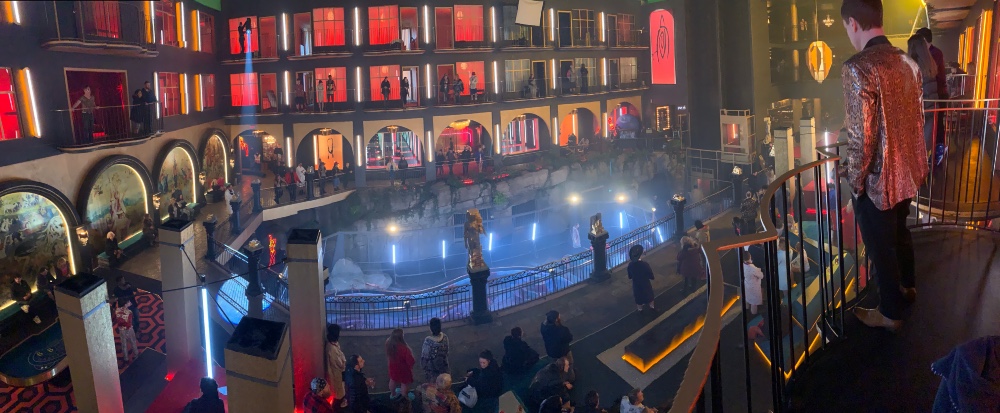
Tackling Stephen King’s 1978 post-apocalyptic novel The Stand would be a challenge for anyone, considering how sprawling it is with so many characters and locations. Frequent King collaborator Mick Garris gave it a try in 1994 with a TV mini-series that cost $28 million – a lot for those times – and now, Josh Boone (The Fault in Our Stars) is giving it a go with a 9-episode limited series currently streaming on CBS All Access.
This iteration of The Stand stars James Marsden as “Stu Redman,” Odessa Young as “Frannie,” Owen Teague as “Harold Lauder,” Jovan Adepo as “Larry,”Alexander Skarsgård as “Randall Flag,” Whoopi Goldberg as “Mother Abagail,” Ezra Miller, Nat Wolff and so many more.
Those locations play a huge part in remaining faithful to King’s work as does the look for the characters, so Below the Line spoke with Production Designer Aaron Haye (Bohemian Rhapsody) and Costume Designer Angelina Kekich (Falling Skies) to learn more about those two elements of the series.
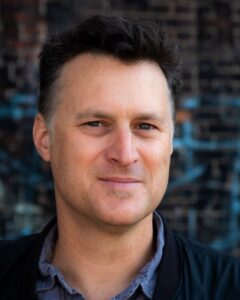
Haye comes to production design from an interesting avenue, that of visual effects, having started straight out of college at Industrial Light and Magic in the mid-90. “To be in that part of the industry [during] this transition between practical effects and digital effects, I quickly discovered that I could use a computer to help build miniatures,” he told us. “That’s why I started using the computer as a design tool with CAD. There were so many opportunities to work with incredible people there at that time, and opportunities to take something from concept — to design and build — and then take it to set.”
Haye quickly realized he could cut out many steps in the art department process between original pencil sketches to digital models and storyboards. “If you just design everything in 3D once then you can give it to everybody,” He deduced. “That was my pitch going into the art departments in the early 2000s and just worked my way through as a set designer, assistant art director or supervising art director, and production designer. I tended to work for years on films with big visual effects, because of that background, and I’ve always felt like I’ve had a foot in both in both worlds, as I don’t necessarily have a traditional art background — I’ve got a degree in marine biology.”
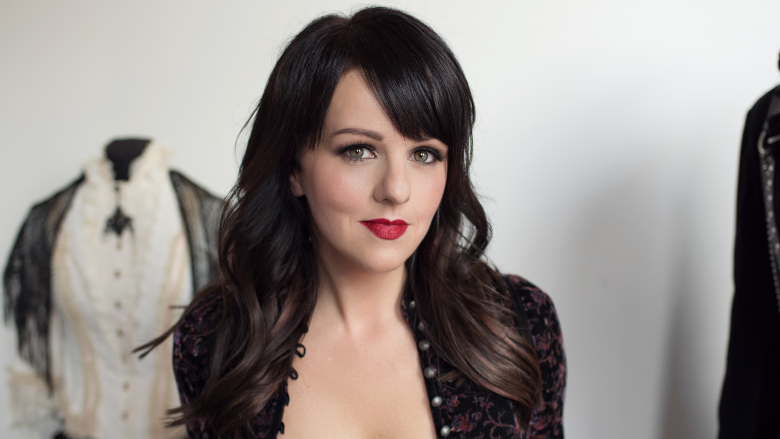
Kekich followed a more traditional path to costume design. “I realized my passion and my drive for costume since I was little,” she said. “I think as a costume designer, I’m able to do every part of it from the renderings, to building the costumes, to developing with the conceptual side of it. I’m not a stylist — I’m actually a costume designer who knows from the basics to the very top of it.”
Now knowing the duo’s background, let’s get into how they got involved with The Stand.
“I started actually in January of 2019,” Haye says. “Josh Boone and [co-creator] Ben Cavell and [Executive Producer] Will Weiske called me, I met with them, and we really hit it off and started basically conceptualizing how we would attack it. Essentially, we spent two or three months budgeting and doing early concept art, and it turned into a budget that the studio went, ‘Well, this is ridiculous. No.’”
Eventually they figured it out, and the series was greenlit but not before Haye had an eerie premonition like something right out of King’s book. “I went off and did some reshoots on a previous film that I’d been working on, and then I had a vivid dream one night that I was on set and making The Stand. I called the producer that morning — I hadn’t heard anything from them for probably three or four weeks — and he said, ‘The studio greenlit us last night. Can you start scouting in a week?’ That story about Mother Abigail and the Dark Man and everything had just infiltrated my mind so much, I think.”
Kekich’s involvement happened more organically without involving any precognitive dreams. “When I came into the project, Josh Boone sat down and said, ‘Okay, here’s the book — you need to read the book — and here’s Andy Burns’ book on the reason Stephen King wrote the book, and behind the scenes of the miniseries,” she begins to explain her entry to the project. Boone told her they would talk after she read them and then added, “I now need you to read all nine episodes,” which stunned Kekich. “I remember sitting there going, ‘Oh, my God, what do you mean?’ I’m used to working episodically, but he was like, ‘No, I need you to read all nine, and I need you to prepare an arc for each of our characters. So basically, we spent 10 weeks in prep, and I worked with a visual consultant named Allison Klein from Los Angeles. Basically, we created over 500 visual boards.”
Much of our discussion with Kekich involved designing the costumes for two particular characters, Owen Teague’s Harold and Skarsgård’s menacing “Dark Man” Randall Flagg, the first who evolves over the courses of the series, the latter who sticks with denim:
Harold’s Evolution
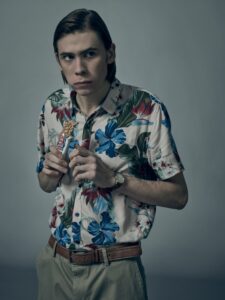
“Owen Teague was just a dream to work with,” Kekich says. “We spent hours talking on the telephone, and he would send me excerpts from the book. Of course, he’s a huge Stephen King fan – the casts all had a very strong relationship with Josh Boone and many of them were involved in it from two to six years.”
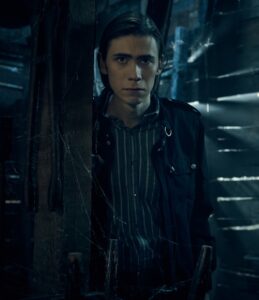
“You look at this individual, Harold, who basically is self-isolated before the pandemic, doesn’t have any friends and doesn’t feel good about himself. He’s been rejected his whole life from his family, to people surrounding him, to his babysitter that he’s been in love with since day one, who doesn’t even look at him,” she elaborated. “We wanted to bring this out, that he lacked confidence. We wanted to show that once the pandemic hit, and it was only him and Frannie, all of a sudden, he’s like, ‘Wow. Can you believe that there’s no government, there’s no policies? There’s nothing — It’s just me and Frannie.’ We really wanted to make a statement when he came to her door, and he had this whole plan set out: He was going to travel with her to go to the CDC.”
Creating the Clothes for Flagg
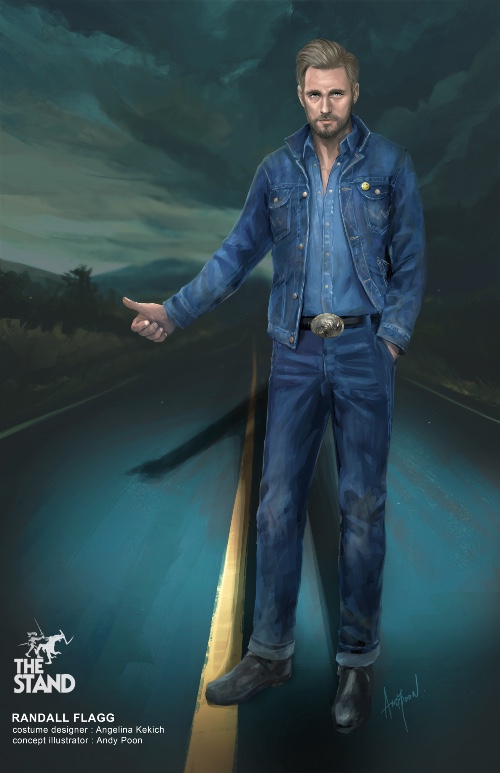
“One of our biggest challenges on the show was we had to create this character,” Kekich told us about Skarsgård’s antagonist. “Josh and I sat down he said, ‘This character is so important, because this is going to be an iconic piece, and we’ve got to stay true to the book and artwork. We have to nail it, because Stephen King is going to be approving this costume.’”
“I started looking at Charles Starkweather, the serial killer from Nebraska in the ‘50s,” she continues. “We looked at all the different artwork that had been done of Flagg/Dark Man, so it was important that we stayed on this route. Basically, we looked at, every style of denim. We looked at vintage denims, we tried to look at different grades, the blues and the textures and colors — we wanted to make sure that it wasn’t flat.”
“I had a whole team working in Los Angeles, I had a team sourcing in New York, we had team in Vancouver. Alex comes in for this fitting, and I think he was overwhelmed with how much I had — I had 40 pairs of jeans, probably 30 to 50 pairs of jean jackets. Jeans, shirts, boots, you name it,” she says. “Josh created this world where he wanted me to establish these relationships with the cast, because the whole cast had strong feelings and emotions towards this project, either because they’ve worked with Stephen King before or they’ve worked with Josh or they had a passion for Stephen King’s work.”
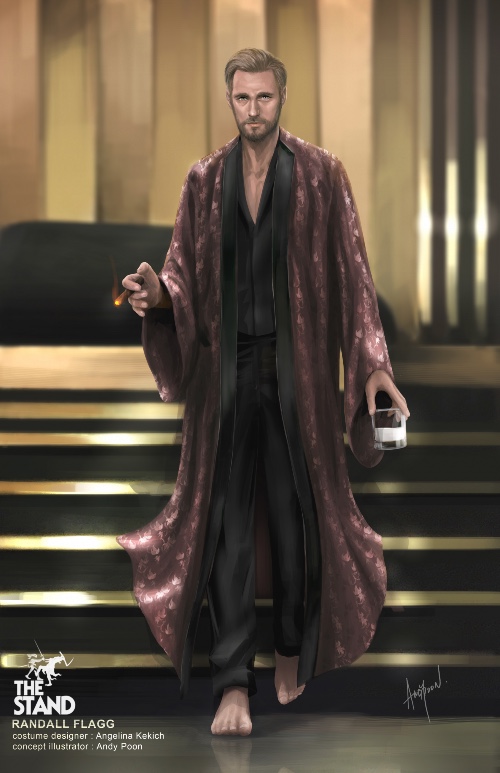
“[Alex] ended up picking pieces from Wrangler, which were all vintage-inspired pieces that we bought, and it fit beautifully,” she remembered. “We tailored it a bit. We kept the pants to give it a bit of a style and flipped the color a little bit. Josh was just on cloud nine: ‘This is our Flagg.’ We sent it to Stephen King and all of us were sitting there with our hands clapped, and he approved it right away: ‘Congratulations, you’ve got your Flagg.’”
Kekich concludes this story with a smile by saying, “Alex signed my illustration at the end and said, ‘Angelina, thank you so much. You created the best costume, and I love you for creating my Canadian tuxedo.’”
We can now get back to Haye, who spoke about the difficulties of creating so many environment and settings into the series while staying on budget. “We tried to squeeze as much as we could and tried to be smart about where we chose to spend the available funds,” he explains. “Obviously, Vegas is a huge part, New York was a huge part, and Boulder, it wanted to feel more prosaic and wanted to feel like the real world. That’s not to say, we didn’t have challenges there as well.” (In fact, if you’ve seen Episode 6 “The Vigil” you’ll know that (SPOILER) Mother Abagail’s house in Boulder comes to a bad end, and that was all done for real!)
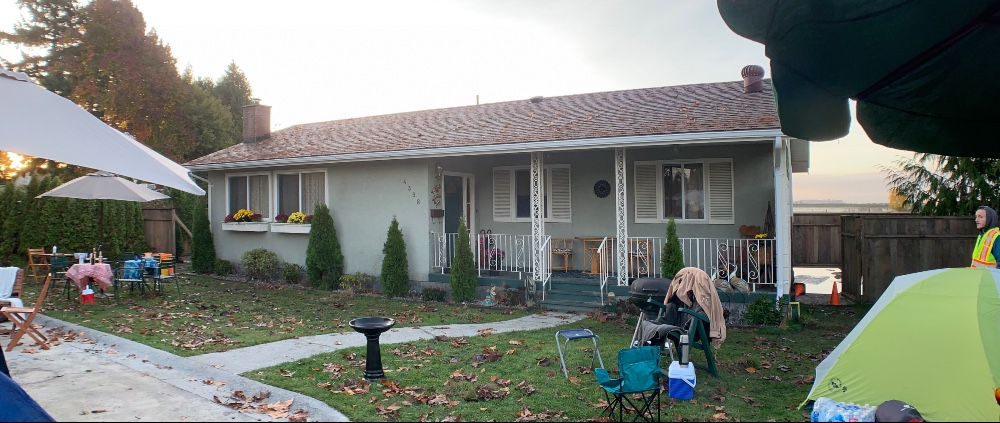
“I didn’t want to be influenced by anything that had been done before visually, but we pulled Easter Eggs from every Stephen King story imaginable,” Haye adds. “We tried to take in all of that information, everything that was in the story, and distill it into the moments that were most important. You want to go big, but you need to put it inside of a box — you need to afford it. That’s part of the job is really figuring out how to make get your biggest bang for your buck and when to pivot on something and say, ‘Okay, let’s not try and build the Lincoln Tunnel in New York, because that’s going to cost two and a half million dollars and take months. Let’s try and figure out something else.’ Those are the sort of challenges that we faced.”
This seems like a good time to talk about the most elaborate set and location you’ll see on The Stand, and that’s Flagg’s Vegas-based headquarters that we see for the first time in Episode 5 in an amazing panorama of what was referred to as “The Inferno.”
Finding and Designing the Inferno
“Obviously Vegas was probably the biggest challenge that we have, because one, you got exterior Vegas, which is massive. How are we going to get that done and where are we going to do it?” Haye explains. “We scouted many times to Vegas — we probably went to every rooftop on the strip looking for the best view. In the end, our first choice was Planet Hollywood. We had gotten into a good relationship with the Caesar’s Palace folks, and they agreed to let us shoot there. Not only to shoot there, but then take their building and do what we wanted visual effects-wise.”
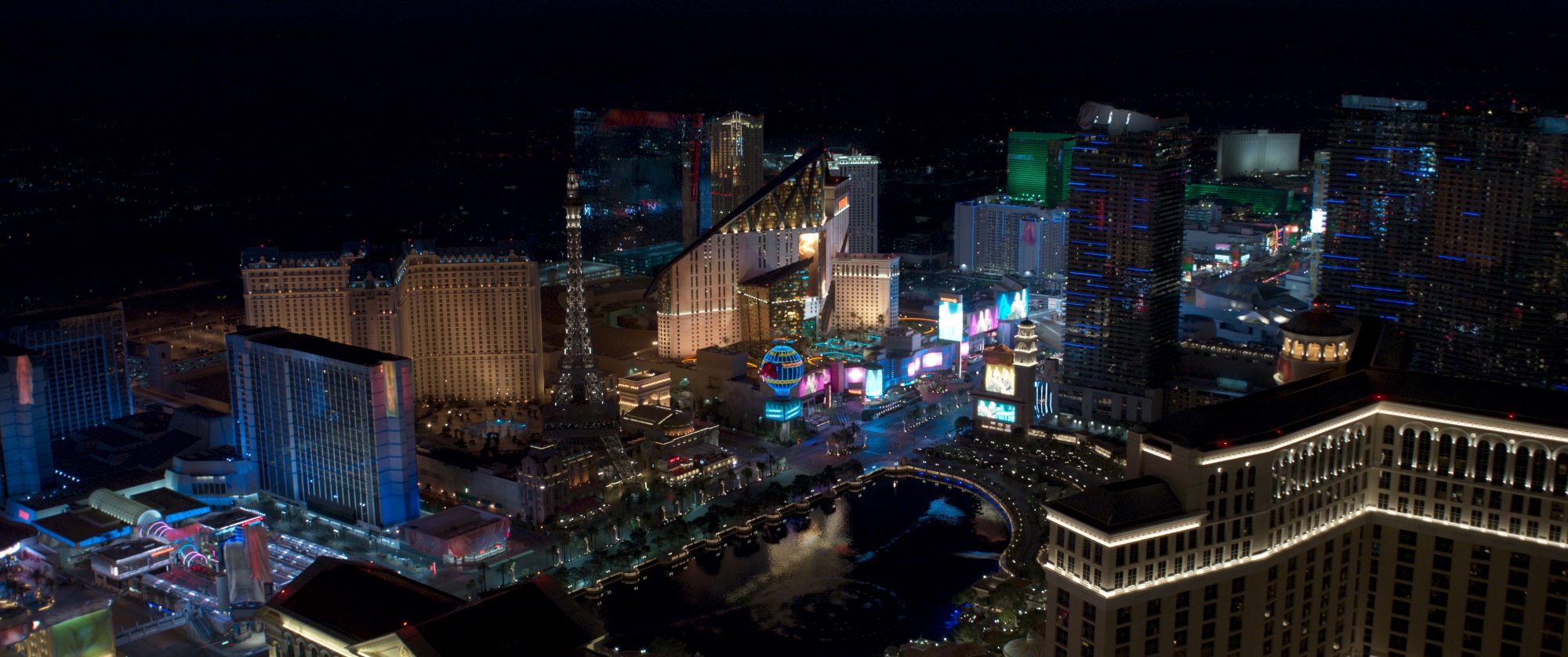
“The year before, I’d seen and been inspired by this piece of Daniel Libeskind architecture in Dresden, Germany, which was this parasitic architecture, sort of like an object taking over another object. That resonated with me in terms of what this space should feel like, as though there was old Vegas and somehow there was this casino that had this shard of glass ripping through it. That was the initial inspiration. We did pencil sketches and worked very closely with Jake Braver, the visual effects supervisor on the show, to plan this out. In the end, one of my set designers, Assistant Art Director Lindsay Ledohowski, she made this beautiful, digital model. We put it into place, roughly, onto the strip We didn’t know that it was called ‘The Inferno’ yet — We just wanted this statement on The Strip, so that’s the exterior, but there were so many levels to this.”
“In the script, the interior had Gladiator cages, and it had this massive atrium and casino floor and penthouse rooms,” Haye says about what The Inferno would look like inside, which proved to be its own challenge. “We went and scouted a number of casinos and quickly realized ‘We can’t really close a casino for four weeks to shoot, not to mention build everything out in there. This is not going to work. There’s no stages big enough to build what we want available, so what are we gonna do?'”
“We looked everywhere and finally found this recently closed hotel near the Canadian US border that had this hideous atrium with this ugly wooden structure and an empty pool,” he continued. “The whole thing was painted pink, so we called it ‘The Pink Palace.’ As soon as I walked in there, I was like, ‘Okay, blank canvas. Let’s just start tearing stuff out and we can make something work here.’ In the end, we had five floors of finished set that allowed us to have hundreds of extras, a gladiator pit in the swimming pool and a suite overlooking everything that was finished. It was really quite a remarkable all-in-one, so basically everything you see from the basement level to Lloyd’s penthouse, all of that was one practical continuous set, and then everything above that level became visual effects extension. It was just an incredible but very awkward space to work in, but the construction team, set decoration team, and art directors were all just amazing and really sort of pulled it out in a crazy amount of time.”
“Trying to get something like that done is always a challenge, but it makes me happy when an actor walks in and goes, ‘What the…?'” Haye concludes.
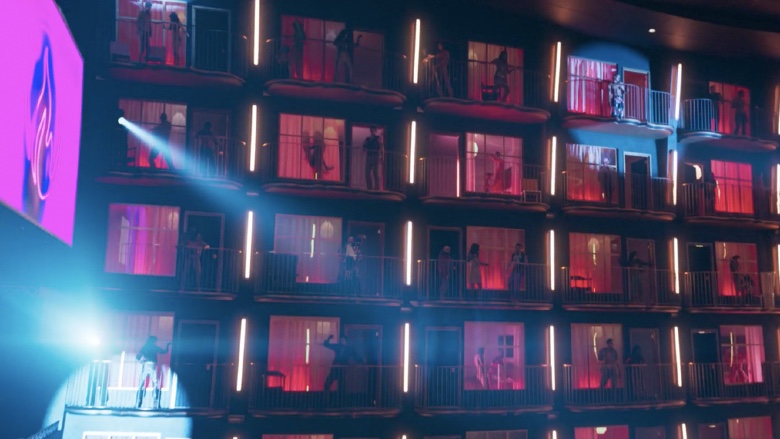
The production was not without other less preventable issues. As with many shows, it was midway through filming when it was hit by the COVID-19 pandemic and had to shut down. “We finished shooting in March, and we were just starting to get prepared to get everything ready for Vegas,” Kekich told us. “We just finished shooting in Vancouver, and then we got shut down. My whole crew was in Vegas — we finalized Vancouver but we never finished Vegas. So we basically had to pack up everything in Vegas, and then everybody had to go home. We shot the Vegas part in September and then we shot in Ashcroft which we used as a resemblance to the travels of the team and going to Vegas.”
The pandemic hasn’t completely hobbled Haye’s ability to do his thing. “I’ve been designing a film I can’t talk about for the last nine months from my house. The changes in technology and communication have made it really possible.”
The first six episodes of The Stand are available to watch on CBS All Access now. We’ll actually have another little bit with Aaron Haye later, because we spoke to him a little further, specifically about the advent of “Virtual Production.”
All photos courtesy of CBS All Access, except where noted. Click on images for larger versions.





